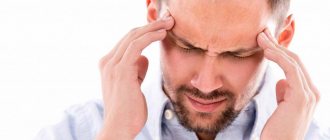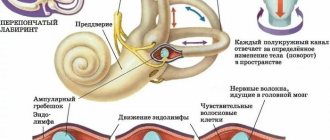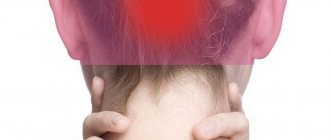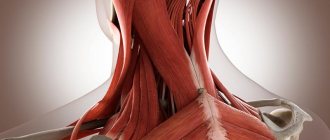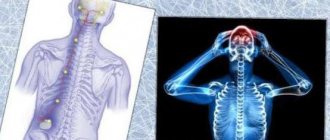12 April 2021
11771
0
3 out of 5
Neck pain is a very common problem. After all, according to medical statistics, more than 70% of people experience this periodically or regularly. Nevertheless, there are many reasons that can provoke pain of varying intensity in the neck. Most of them lie in diseases of the cervical spine. At the same time, the characteristics of pain, its localization, and the nature of other existing symptoms are important diagnostic signs that help to correctly determine what triggered them and prescribe treatment appropriate to the situation. It is very important to identify the disease causing pain in the neck as early as possible and take measures to eliminate it, since they can cause severe complications, including disability.
Why does neck pain occur?
Pain in the neck and head occurs due to:
- Partial spinal dysfunction associated with vertebral artery syndrome (circulatory disorders when moving the head).
- Vascular diseases of a systemic type (chronic alcohol or drug intoxication, metabolic diseases).
- Osteochondrosis of the cervical spine (degenerative and dystrophic pathology).
- Traumatic damage to the head and spine.
- Vegeto-dystonic syndrome.
With such ailments, in addition to pain, memory impairment, irritability, insomnia, anxiety, fear, dizziness, and a crunch in the neck appear. To accurately determine the diagnosis, you need to see a doctor.
Diagnostics
For neck pain, the doctor first performs an examination, interviews the patient and evaluates his lifestyle. Then instrumental examination methods are carried out:
- Radiography is a procedure for examining the spine by projecting x-rays onto film.
- CT scan. During this event, the source of pain under the doctor’s palpation is scanned and displayed as a three-dimensional image on special equipment.
- Magnetic resonance imaging. With its help, images of the affected area of the spine are created in various projections using a powerful magnetic field, after which a diagnosis can be made.
With dizziness
Why do you feel dizzy and have neck pain? To determine the cause, you need to understand the structure of the spine in the cervical region. In this part, a bundle of blood vessels enters through the vertebrae, and due to the curvature, uneven pressure appears. As a result, with deformation, an increase or decrease in intracranial pressure is observed. That's why my neck hurts and I feel dizzy. Soreness is usually on 1 side.
In addition to dizziness and neck pain, there may be increased weather sensitivity, redness of the white membrane of the eye, swelling around the eyes, and nosebleeds. The mobility of the cervical spine also worsens, myositis may appear with the likelihood of becoming chronic.
This type of compression occurs due to improper function of different spinal sections. Uniform compression of blood vessels leads to a decrease in oxygen supply to the brain. This can be seen in speech disorders, a feeling of weakness, the appearance of apathy, sleep disturbance, which is a sign of decreased brain functionality.
In addition to neck pain and dizziness, you are also likely to experience:
- spasms in the shoulder girdle;
- the appearance of a lump on the seventh cervical vertebra;
- radiating pain into the arm.
The causes of the condition include injuries. Pain in the neck, back of the head and dizziness are signs of pathological mobility of the cervical vertebrae, vertebral artery syndrome, and osteochondrosis.
In many patients, such symptoms occur precisely due to osteochondrosis. Provoking factors that cause severe neck pain and dizziness include physical overexertion, hypothermia, injuries, and a monotonous posture that does not change for a long time. Manifestations of osteochondrosis include morning dizziness, which lasts throughout the day. It is also possible to experience a headache, a feeling of weakness, lethargy, drowsiness, a crunch in the neck, changes in the sensitivity of the hands, sweating, nausea, hearing and vision impairment.
Types of pain and causes
Cervicalgia or neck pain can be of varying intensity and nature, persist for different periods of time and be accompanied by other deviations from the norm. Determining the type of pain has important diagnostic value, as it helps to find out what caused it.
So, pain can be either mild or acute, burning in nature and significantly poison a person’s life. Very often it begins with a lumbago, after which persistent pain sets in. In general, pain can be aching, stabbing, throbbing, pressing, etc.
Very often they tend to intensify during movements, in particular when tilting the head or turning. Also, the pain syndrome can gain strength when remaining immobilized for a long time, especially in an uncomfortable position. Therefore, people often complain of neck pain after prolonged work at the computer. In such situations, you can often notice that the patient turns his whole body in response to the response, trying to keep his neck motionless.
In addition to the nature and intensity, neck pain can persist for different periods of time. They may be episodic, pass quickly, or be present continuously over a long period. In the first case, they speak of acute pain, while if it persists for more than 10 days, chronic pain syndrome is diagnosed.
All neck pain can be divided into vertebrogenic and non-vertebrogenic. The former are a consequence of the occurrence of pathological changes in the structures of the cervical spine. This in itself provokes discomfort in the neck, and can also be complicated by the development of radicular syndrome as a result of compression of the spinal roots passing through the vertebrae. Since the transmission of nerve impulses along compressed nerves is disrupted, this causes the appearance of characteristic symptoms, the combination of which is combined under the term “radicular syndrome”:
- sharp pain in the neck, radiating to the back of the head, shoulders, arms, including hands and fingers;
- numbness, crawling sensation and other sensory disturbances in the same areas of the body;
- movement disorders, which is manifested by a decrease in the amplitude of movements or the inability to make previously habitual movements.
If the development of pathological changes in the spine leads to compression of the large blood vessels (vertebral arteries) passing through the cervical vertebrae, patients may suffer from severe headaches and attacks of dizziness, which can result in loss of consciousness. This is due to disturbances in the nutrition of the brain, which are more pronounced the more one or both vertebral arteries are compressed.
Nonvertebrogenic pains are those that are a consequence of disorders that do not have a direct connection with the spine. Their appearance can be provoked by diseases of the thyroid gland, lymph nodes, infections, inflammatory processes in the muscles, etc.
Whatever the pain, it cannot be ignored, since in this way the body signals problems in the condition of the cervical vertebrae, the intervertebral discs located between them, the neck muscles, the thyroid gland or other anatomical structures.
Thus, there are quite a few types of neck pain. Very often there is a sharp pain. In the vast majority of cases, it indicates the development of radicular syndrome, but the reasons for its occurrence may be different . Let's take a closer look at them.
Protrusions and intervertebral hernias
Degenerative-dystrophic changes in the intervertebral discs of the cervical spine or osteochondrosis are a widespread phenomenon. They are a consequence of a sedentary lifestyle and are especially typical for representatives of “sedentary” professions, who can develop even at a fairly young age.
In such situations, the cartilage, which is essentially the intervertebral discs, gradually becomes dehydrated. This leads to a decrease in their height and bringing the vertebral bodies closer together. This in itself may be accompanied by pain. But a sharp pain in the neck appears at the moment of irritation or compression of the spinal roots passing here by the disc or the bone structure of the spine. They branch from the spinal cord at the level of each of the vertebrae and are responsible for the innervation of the upper extremities, ENT organs and some others.
Dehydration of the discs leads to a decrease in the elasticity of the fibers that form their outer shell (annulus fibrosus). As a result, they are more easily damaged, and under the influence of daily stress they receive micro-tears. As the number of such microscopic breaks increases, the strength of the fibrous ring decreases and in the most vulnerable place it becomes deformed and protrudes into the spinal canal, where the spinal cord and the roots extending from it pass. Since the thickness of the spinal canal in the cervical spine is especially small, even small protrusions of the intervertebral discs can compress the spinal roots, which provokes sharp pain in the neck.
When the protrusion is located in the center of the spinal canal, it can make itself felt for quite a long time only by short-term aching, dull pain in the neck. But in the absence of treatment, regardless of the position of the protrusion, the deformation of the disc worsens, the protrusion increases in size and an increasing number of fibers forming the fibrous ring are torn. Ultimately, its integrity in this place is disrupted and the internal contents of the intervertebral disc extend beyond the fibrous ring. This is called a herniated disc. Gradually, the hernia increases and sooner or later it infringes on the spinal roots, becoming the cause of radicular syndrome with its sharp pain in the cervical spine, radiating to the arms, etc.
Protrusions and hernias can also compress the vertebral arteries, causing the appearance of characteristic symptoms: headaches, dizziness, etc.
Spondylosis
Spondylosis is another possible consequence of degenerative changes in the intervertebral discs. This disease is characterized by the formation of bony protrusions on the vertebral bodies, which are called osteophytes. They form in response to a decrease in the height of the intervertebral disc and increase as the disease progresses.
Osteophytes have sharp edges and over time tend to fuse with those located on the body of the underlying vertebra. This leads to injury to the spinal roots, which is accompanied by severe pain in the neck, which tends to persist for a long time. If left untreated, osteophytes grow together, uniting the bodies of adjacent vertebrae into a single whole. This not only sharply reduces the mobility of the cervical spine, but also leads to severe pain, since the bone structures strongly compress the spinal roots. Ultimately, this can lead to their death and, accordingly, serious disruptions in the functioning of the organs and parts of the body innervated by them, including paralysis. The vertebral arteries may be similarly affected.
Vertebral compression fractures
A compression fracture of a vertebra is a decrease in its height in one part, as a result of which it acquires a wedge-shaped shape. This can not only be a consequence of injury or blow, but also occur independently against the background of osteoporosis, for example, with a sharp tilt of the head.
Because osteoporosis, or decreased bone density, is most common in older people, non-traumatic compression fractures are more common in them.
Violation of the anatomy of the vertebra leads to various disorders, one of which can also be compression of the nerve roots. A compression fracture itself is almost always accompanied by sharp pain in the cervical spine, and if the spinal root is damaged, it will persist until the normal size of the vertebra is restored.
In isolated cases, compression fractures occur almost unnoticed by patients, which is mainly typical for older people. But subsequently they can also lead to severe pain in the neck.
Myofascial syndrome
Myofascial syndrome is a disease accompanied by the occurrence of severe spasms of individual muscles in response to touch or physical activity. This leads to sharp, severe pain. Myofascial syndrome becomes a consequence of prolonged static muscle tension, uneven distribution of load on the neck or pinched nerves.
Neck and head pain
There are many pathologies that cause pain in the back of the neck and dizziness. Diseases leading to such symptoms include myogelosis, neck migraine, neck muscle strain, cervical osteochondrosis, damage to the occipital nerve, and cervical spondylosis.
With myogelosis, severe pain in the back of the head, dizziness, stiffness of the shoulder girdle, and muscle swelling appear. Cervical spondylosis is accompanied by pain in the head or neck, pain that is not associated with physical activity. Pain in the upper third of the shoulder is likely, radiating to the ears or eyes, as well as discomfort when rotating the head.
Migraine-like pain in the neck occurs in the form of intense pain in the head and temples. There may be a feeling of pain in the eyes, as well as visual and auditory dysfunction. Due to overstrain of the neck muscles, pain appears in the back and in the head. Such symptoms occur when a static posture persists for a long time. With this pathology, a pressing, constant pain appears in the forehead or on the back of the head. It may grow.
If your neck, back of your head hurts, or you feel dizzy, this may be due to neuralgia. Severe pain attacks appear that radiate to the back, jaw or ears when moving the head. Cervical lumbago is a pathology of the spine in which the neck hurts and such sensations radiate to the head. It appears when receptor structures in the spinal nerve are compressed.
Why do you often feel dizzy?
Why did you suddenly feel dizzy? A person experiences a feeling of dizziness for various reasons, but all of them can be divided into two groups: physiological (within normal limits) and pathological (associated with a disease).
Physiological causes of dizziness include:
- moving at high speed along a straight or curved path (jumping from a great height, riding various attractions, etc.;
- fear and the associated release of stress hormones that affect the heart and vascular system;
- a state of hyperventilation of the lungs, due to which the blood is oversaturated with oxygen;
- insufficient supply of oxygen to the brain and other organs due to low hemoglobin levels due to nutritional imbalance;
- hypoglycemic conditions associated with low calorie intake or untimely meals;
- in women – premenstrual state, menstruation period, pregnancy.
The list of pathological causes of dizziness includes:
- diseases of the auditory organ that cause disruption of the perception of sound signals and the passage of vestibular nerve impulses to the brain (vestibular neuritis, labyrinthitis, Meniere's disease);
- osteochondrosis, cervical hernias, leading to compression of the cervical vessels and disrupting blood circulation in the brain tissue;
- stroke, coronary artery disease, thrombosis - diseases that cause a sharp disruption of blood flow, which causes hypoxia in the brain tissue;
- migraines, attacks of benign paroxysmal vertigo;
- tumors in brain tissue;
- menopause;
- panic attacks;
- consequences of taking certain medications.
Researchers have counted about 80 different diseases that cause dizziness. Identification of the cause in each individual case is possible only after a comprehensive examination of the patient.
Therapy
If your back, neck hurts, or you feel dizzy, then you need to take this problem seriously and, if pathologies appear, urgently visit a neurologist, therapist or orthopedist. Treatment will relieve pain, relax neck muscles and eliminate provoking causes. Often, discomfort is relieved with painkillers, anti-inflammatory drugs and muscle relaxants.
If your neck hurts or you feel dizzy, what should you do? Doctors prescribe combination drugs with paracetamol and acetylsalicylic acid. These are “Askofen”, “Aquacitramon”, “Pamol”, “Perfalgan”. Paracetamol does not cause irritation of the gastric mucosa, but it is harmful to the liver in large quantities, and acetylsalicylic acid improves blood flow by reducing platelet aggregation, but stomach irritation may also occur.
If you feel dizzy or have a sore neck between the shoulder blades, non-steroidal anti-inflammatory drugs may be prescribed. These are Ibuprofen and Diclofenac. These drugs eliminate pain caused by inflammation, but prolonged use can lead to gastritis, ulcers, and gastric bleeding.
Other effective remedies
In addition to medications, recovery comes from physiotherapy and reflexology. Massage and manual therapy have beneficial effects. The method of exposure should be chosen by a doctor, since the causes of pain may require different therapy.
If your neck hurts, you feel dizzy, or feel nauseous, choose reflexology methods:
- acupuncture;
- pharmacopuncture;
- vacuum therapy.
After pain has been reduced, recommendations for physical therapy and exercise are provided. The effectiveness of therapy depends on an individual approach and complementary treatment procedures.
Cure dizziness in St. Petersburg at the neurology clinic
When a diagnosis has been made and it has been established that the cause of dizziness is a neurological disease, then you can safely and quickly take measures to get rid of this symptom and cure the disease. A number of recreational activities are held at the Professor Zhulev Neurological Center. Do not tolerate unpleasant sensations, return to solid ground under your feet. Make an appointment and receive advice and recommendations for your case. A course of therapy will help get rid of obsessive dizziness and the causes of its occurrence. We are located in St. Petersburg near the metro station pl. Vosstaniya, Chernyshevskaya.
Exercise therapy and massage
Physiotherapists and massage therapists help eliminate pain in the back of the head. Electrophoresis can improve blood flow in tired muscles. A warming massage also relieves discomfort. When pain occurs due to osteochondrosis, physical therapy helps.
To relieve pain, you need to stretch and relax the neck muscles:
- You must sit on a hard seat with a backrest, but do not touch it with your back.
- You need to take your head in your palms, pressing a little with your thumbs on the cheekbones, and with the other on the back of your head.
- With your head tilted back, you need to apply a little pressure with your fingers.
- You need to stay in this position for about 6 seconds, and then relax and touch the back.
- The exercise is performed several times.
Chiropractors allow you to relax your back muscles. If there is pain in the cervical spine or the back of the head, you need to get permission from your doctor to perform manual therapy. The specialist will prescribe the necessary vitamins and warming gels, which will speed up blood flow.
Dangerous symptoms
Some signs require special attention. This applies to:
- Intense “thundering” pain, which may indicate a cerebral hemorrhage.
- For the first time, strong compression appeared in the back of the head. This may be a symptom of an intracranial tumor or temporal arteritis.
- Increasing sensations over 2-3 weeks resulting from large brain tumors.
- Noticeable disturbances in consciousness.
- Unexpected unusual pain during physical activity that increases intracranial pressure.
It is not possible to make a diagnosis on your own. It is better to consult a doctor if unusual symptoms appear. This way, the causes will be identified and effective treatment will be prescribed.
What causes dizziness
If we separately consider such a symptom as dizziness, we can distinguish two main causes. The first is a disruption of brain function. The second is a disruption of the vestibular apparatus. The mechanism of dizziness can be described as follows:
- information about the location of the body in space enters the brain from the vestibular apparatus through the nerve endings of the peripheral nervous system;
- this information is processed and transferred to the balance center, which is located in the temporal lobes of the brain.
If the process of transmitting information about the location of the body in space is disrupted at any stage, the person is likely to feel dizzy. A violation can occur for any of the reasons listed above - vascular malfunction, injury, metabolic disorder, and so on.
Prevention
An important point in the prevention of ailments that cause neck pain and dizziness is the development and use of correct movements. But experts recommend adhering to a number of preventive measures:
- It is necessary to avoid sudden movements when bending the body.
- Periodically (every half hour) you need to change the position of the body while maintaining a monotonous position for a long time.
- It is necessary to maintain correct posture.
- Avoid overstraining the intervertebral discs.
- You should not lift weights exceeding 10 kg.
- You should develop a habit of physical exercise that strengthens your back muscles.
- When lifting heavy objects, a special corset is used.
- The natural physiological curves of the spine should be preserved.
- Avoid overcooling and creating drafts in the room.
- Rational nutrition and hardening of the body are useful.
The main causes of the development of osteochondrosis
Causes:
- spinal deformity (scoliosis, kyphosis, lordosis), trauma;
- incorrect posture, forced posture due to professional activities;
- passive lifestyle;
- lack of physical exercise, physical inactivity;
- lack of calcium, phosphorus, zinc, manganese, vitamin D;
- genetic predisposition;
- replacement of cartilage tissue with bone tissue;
- obesity;
- autoimmune diseases (Bechterew's disease);
- stress;
- injuries.
What do experts think?
The best prevention of pain is a healthy lifestyle. You should not sit at the computer a lot, and if you need to work for a long time, you should have a chair with a high, supportive back. This will allow you to correctly distribute the load on the spine. It is also important to ensure proper rest. Sleep should last at least 6-8 hours. The best therapeutic prevention would be an orthopedic pillow and mattress purchased from a certified manufacturer.
Moderate physical activity is of great importance. With the help of daily gymnastic exercises for the neck and other parts of the spine, the musculoskeletal system is strengthened. In addition, the joints become strong, elastic, and resilient.
To avoid pain in the neck, head, and back of the head, you should not consume large quantities of fatty, smoked, and salty foods. Food should contain mineral supplements and vitamins. You also need to eliminate bad habits - smoking, alcoholic drinks. Every year you need to undergo preventive examinations with local therapists or specialized specialists.
Thus, neck pain and dizziness arise from various causes. Only a doctor can identify them. It is necessary to follow the recommendations of a specialist in order to quickly improve your condition.
